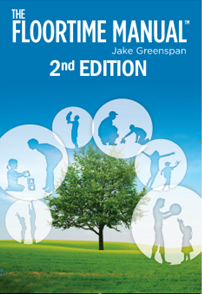Floortime vs. ABA:
Understanding the Differences in Approaches to Autism
(Stanley I Greenspan MD Inc. and its intervention, The Greenspan Floortime Approach®, DO NOT endorse or support ICDL or its DIRFloortime curriculum)
When it comes to supporting children with autism, there are various therapeutic approaches available. Two prominent methods are Floortime (officially The Greenspan Floortime Approach®) and Applied Behavior Analysis (ABA). While both aim to help children thrive, they differ significantly in their philosophies and techniques. This article provides a comparative overview to help you understand these approaches better.
Floortime: Helping Children Relate, Communicate, and Think
Developed by Dr. Stanley Greenspan in the 1980’s, Floortime, officially The Greenspan Floortime Approach®, emphasizes the importance of social-emotional development through meaningful relationships and nurturing interactions.
A Developmental Approach: Greenspan Floortime® focuses on nurturing and strengthening a child’s growth from the ground up. Using the Greenspan/DIR Model, a psychodynamic framework, to identify a child’s unique profile, Floortime is the only intervention that is part of a validated model of child development used to identify a child’s profile/goals. It focuses on the foundational milestones for emotional and social development, such as self-regulation, engagement, and two-way communication, language, and flexibility.
Validated Developmental Framework: Greenspan Floortime®is the only intervention of its kind that is based on a proven developmental model, the Greenspan/DIR™ Model. This model serves as a guide to identifying the key developmental social-emotional milestones we all must master to survive in a perpetually changing complex world.
Evidence: Dr. Greenspan’s version of Floortime, Greenspan Floortime®, is based on the science of Neuroplasticity and Human Development. Researchers, including Dr. Greenspan, have produced several outcome studies showing Floortime’s effectiveness at improving self-regulation, relatedness, social skills, communication, and even compliance when compared to an ABA group.
Key Principles of Greenspan Floortime:
- Child-centered: The therapist follows the child’s lead, interests, and emotions, creating playful interactions to build connections.
- Thinking-based: Floortime emphasizes getting the “Child to do the Thinking”. Instead of teaching an adult driven outcome or skill, children learn to create, adapt, and socially problem-solve within meaningful relationships as the foundation for all learning and development.
- Holistic: Floortime is individualized and tailored to each child’s unique strengths, challenges, and developmental profile working on the whole child. It recognizes that each of our areas of functioning (i.e. motor, communication, emotional, etc.) are meant to work together in daily life in unison.
Greenspan Floortime in Practice:
- Therapists engage in child-led play, respecting the child’s needs and cues and joining their world to create a shared world.
- They create playful challenges to encourage the child to expand their communication, problem-solving, adaptability, and social-emotional skills.
- Floortime involves parents and caregivers, empowering them to use these techniques in everyday interactions within a variety of environments to encourage generalization and flexibility.
Applied Behavior Analysis (ABA): Shaping Behavior Through Reinforcement
ABA is a therapy based on behavioral conditioning, the science of teaching behaviors. It focuses on understanding how external behaviors work and using that knowledge to bring about changes.
A Behavioral Approach: ABA uses techniques like rewards, positive reinforcement, prompting, and repetition to increase desired behaviors and decrease challenging behaviors or symptoms. Operating in a top-down manner, behavioral interventions treat external observable symptoms, hoping they address the internal causes. However, behavioral interventions do not directly address how the child is feeling inside, which is almost always a key element leading to the behaviors.
Evidence: ABA collects data from their sessions based on the number of repetitions (trials) and the number of successful outcomes a child completes for a given skill. This data is empirical and does not prove a scientific hypothesis. For example, ABA can show that it can teach a child to point at specific picture/image “X” out of 10 times but has never proven scientifically that teaching a child to point using this method leads to statically significant improvements in spontaneous and meaningful social communication. ABA also uses evidence from other behavioral interventions, non-pediatric ones, to support its effectiveness, claiming a large body of research.
Key Principles of ABA:
- Structured learning (Prompts and Rewards): ABA therapy often involves structured teaching sessions with clear goals and objectives.
- Data-driven: Progress is closely monitored and measured to ensure effectiveness.
- Skill acquisition: ABA focuses on teaching specific skills, such as specific words and phrases, eye contact, compliance (following instructions), and self-care.
ABA in Practice:
- Therapists break down skills into small, manageable steps and use reward/reinforcement to teach new behaviors.
- They may use discrete trial training (DTT), a structured teaching method involving repeated trials and reinforcement.
- ABA therapy can be applied in various settings, including homes, schools, and clinics.
Comparing Floortime and ABA


Which Approach is Right?
The best approach depends on the individual child’s needs, strengths, and challenges. Some families may choose to use a combination of Floortime and ABA, but the two approaches don’t work as well together as they do individually. Because of the opposing learning modalities within each intervention, trying to do both can lead to slow or no progress, and sometimes stress.
- Floortime may be particularly beneficial for children who need support with:
- Self-regulation
- Engagement and interaction
- Communication
- Sensory processing
- Building relationships
- Social-emotional development
- Adaptability
- ABA may be helpful for children who need support with:
- Skill acquisition (e.g., compliance, self-care)
- Temporarily reducing challenging symptoms/behaviors
- Being compliant in structured environments
It’s crucial to consult with your child’s healthcare team, including therapists and educators, to determine the most appropriate and effective approach for your child’s unique needs.


Unlock the secrets of Dr. Greenspan’s Floortime: Learn to APPLY Greenspan Floortime. Purchase the comprehensive Floortime Manual 2nd Edition and embark on a journey of joyful, meaningful communication with your child


Earn a Greenspan Floortime Certificate: Take your expertise to the next level and earn an official Greenspan Floortime Certificate, recognized worldwide.


Experience Personalized Guidance: Accelerate your progress with individualized coaching, virtual or in-person, tailored to your unique needs and goals.